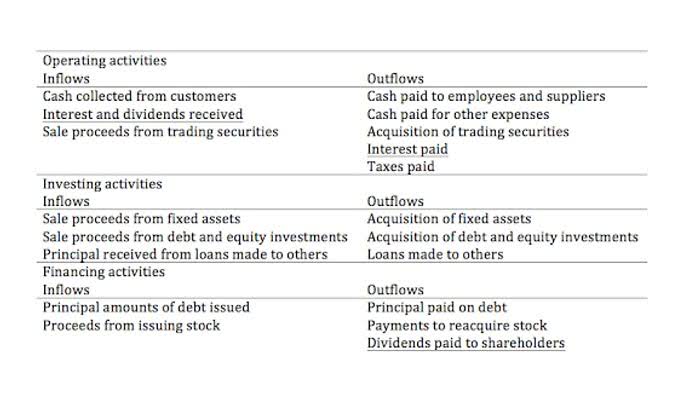
Understanding the components of the cost of goods manufactured (COGM) is essential for accurately calculating production costs. The goods manufactured formula involves several key elements that collectively determine the total cost of producing goods. Understanding the formula for calculating the cost of goods manufactured (COGM) can significantly transform a manufacturer’s financial management. Take the initial WIP inventory, incorporate all manufacturing costs incurred, and then deduct the ending WIP inventory. For example, if you don’t account for raw materials that were damaged or lost during production, your direct materials used will be inaccurate. Cost of Goods Manufactured (COGM) is a detailed calculation of everything it takes to produce goods.
Distinguishing Between COGM, COGS, and TMC
The information and materials provided on Sustainable Business Toolkit should not be construed as professional, financial or legal advice. Readers should seek advice from licensed practitioners for their business and personal decisions as necessary. Calculate the beginning WIP inventory (unfinished goods at the start of the period) and the ending WIP inventory (unfinished goods at the end of the period).

Determining Direct Materials Used

By maintaining product quality and using data from manufacturing metrics to cut expenses, you can stay ahead of your current competitors and the influx of new entrants to the manufacturing market. The cost of goods manufactured is covered in detail in a cost accounting course. In addition, AccountingCoach PRO includes a form for preparing a schedule of the Cost of Goods Manufactured. This insights and his love for researching SaaS products enables him to provide in-depth, fact-based software reviews to enable software buyers make better decisions. The (COGS) is an essential component that provides a clear picture to business owners and managers about the company’s manufacturing performance. To calculate direct labor, you have to calculate the direct hourly labor rate and the direct labor hours.
Cost of goods manufactured explained: a guide for product businesses
Such forward-looking insight is pivotal for sustaining an upward financial path and securing the resilience of the manufacturing business amidst shifts in market dynamics. Within the Oil And Gas Accounting sphere of financial strategy, the knowledge provided by COGM data is essential for precise budgeting and forecasting. This software guarantees that manufacturing operations proceed with elevated efficiency and clarity.
What To Know About Batch Production: A Product Seller’s Guide

It represents the expenses directly related to the goods sold during the period. By using integrated automation solutions, you can turn COGM tracking into a seamless, real-time process. This shift minimises mistakes, provides better data, and boosts productivity tremendously. If you haven’t already, we encourage you to start calculating your COGM with Ordoro today. Not only will you gain a better understanding of your business costs, but you’ll also be better equipped to navigate the competitive ecommerce landscape.

Your beginning work in process (WIP) inventory is the value of goods in production at the start of an accounting period. In inventory accounting, WIP inventory is an asset on a company’s balance sheet. This inventory isn’t included in the cost of raw materials or finished goods. By breaking down the costs into direct materials, direct labor, and manufacturing overhead, you can pinpoint areas where you might be overspending. This allows you to make informed decisions about cost-cutting measures or process improvements.
It provides real-time insights into your inventory costs, allowing you to make informed decisions about pricing and supply chain management. Direct materials are raw materials that become an integral part of your finished product. For a custom jewelry merchant, this might include sterling silver wire bookkeeping and semi-precious stones. In a survey, over 70% of businesses reported that direct materials make up the largest portion of their COGM. It’s essential for manufacturers to calculate COGM precisely because it directly affects pricing, cost control, profitability, and financial reporting. Accurate COGM calculation ensures competitive pricing strategies and reliable gross margins, safeguarding the financial health of the business.
- As we’ve explored, understanding and calculating the Cost of Goods Manufactured (COGM) is vital for maintaining financial health and optimizing production processes in manufacturing.
- With a complete picture of your production costs, you can improve operations and make informed decisions to increase margins and profitability.
- The COGM calculation is rooted in industrial and managerial accounting practices, evolving as manufacturing processes became more complex.
- Wherever your rising costs are coming from, you’ll want to investigate them proactively.
- These products have received some manufacturing inputs but are not yet ready for transfer to finished goods inventory.
- Understanding the cost of goods manufactured (COGM) is crucial for several reasons.
And you wouldn’t be alone — even multinational corporations like Procter & Gamble hit consumers with double-digit price increases to combat the rising cost of raw materials in 2023. If you must wait until an entire batch of goods has been sold before calculating your total manufacturing costs, you’ll miss out on opportunities to save money and increase revenue. To turn your business into a competitive, lasting compute cost of goods manufactured brand, you’ll need to constantly monitor your production costs. That includes the cost of goods manufactured, a key metric that helps manufacturing businesses to stay profitable. The Cost of Goods Manufactured (COGM) is a fundamental metric in the financial management of manufacturing companies. It provides a clear picture of the total production costs and is vital for various financial decisions.

